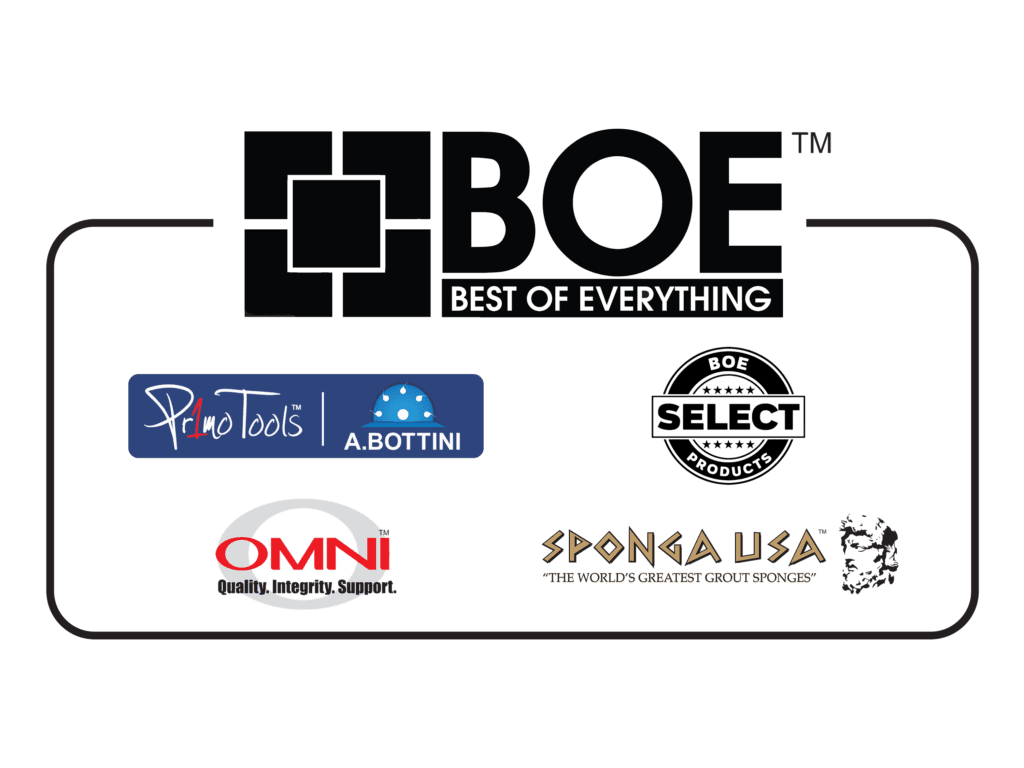

FAQ
Why is the company called Best of Everything (BOE)?
We chose our name as a constant reminder of dedicated to being the “BEST” of “EVERYTHING”– the best quality products, the best products selection, the best customer service, the best technical support, and the best pricing. Equally as important, we want to have the best possible relationship with our Wholesale Distributor customers as well as their Contractor and Installer customers.
What is BOE's mission or vision?
We believe that the Tile & Stone Industry represents a wonderfully unique segment of the business world in which relationships and reputations make a difference. This belief was, in part, the genesis for the creation of BOE. Clearly, quality, price, service and support matter. And at BOE, we strive to provide innovative Tools, Sealers, & Sponges of the highest quality at competitive prices, while delivering superior service & technical support, as do many others. But at the end of the day… business is about people, not just products!
Why does BOE have separate brands?
Does BOE provide marketing support for its products?
Yes! We can provide displays, flyers, and other items to ensure our distributors have the greatest possible success showing their customers why our products are truly the best. Specific marketing materials can be found under our brand dropdown menus.
Can I order BOE products directly from your website?
We have an extensive network of Wholesale Distributor partners throughout the US, Canada, and Mexico who are the primary suppliers of BOE products to Contractors, Installer and DIYers. With the Distributor Finder feature on our website, you should be able to find a local supplier. However, we do also have an online store should a Distributor be unavailable near you.
Is BOE involved with any industry organizations?
We are proudly affiliated with the industry’s most prominent organizations, including the Ceramic Tile Distributors Association (CTDA), the Tile Council of North America (TCNA), the Tile Contractor’s Association of America (TCAA), and the National Tile Contractor’s Association (NTCA). BOE and its founders actively support these organizations through Board and Committee Membership, Training Events, Trade Shows and Management Conferences, as well as Loyalty Programs.
What Industry Events does BOE attend?
We love networking at the many annual events that are put on in the Tile and Stone Industry, including Coverings and Training Events for NTCA and Total Solutions Plus. For specifics on what we plan on attending, take a peek at our BOE Calendar.
